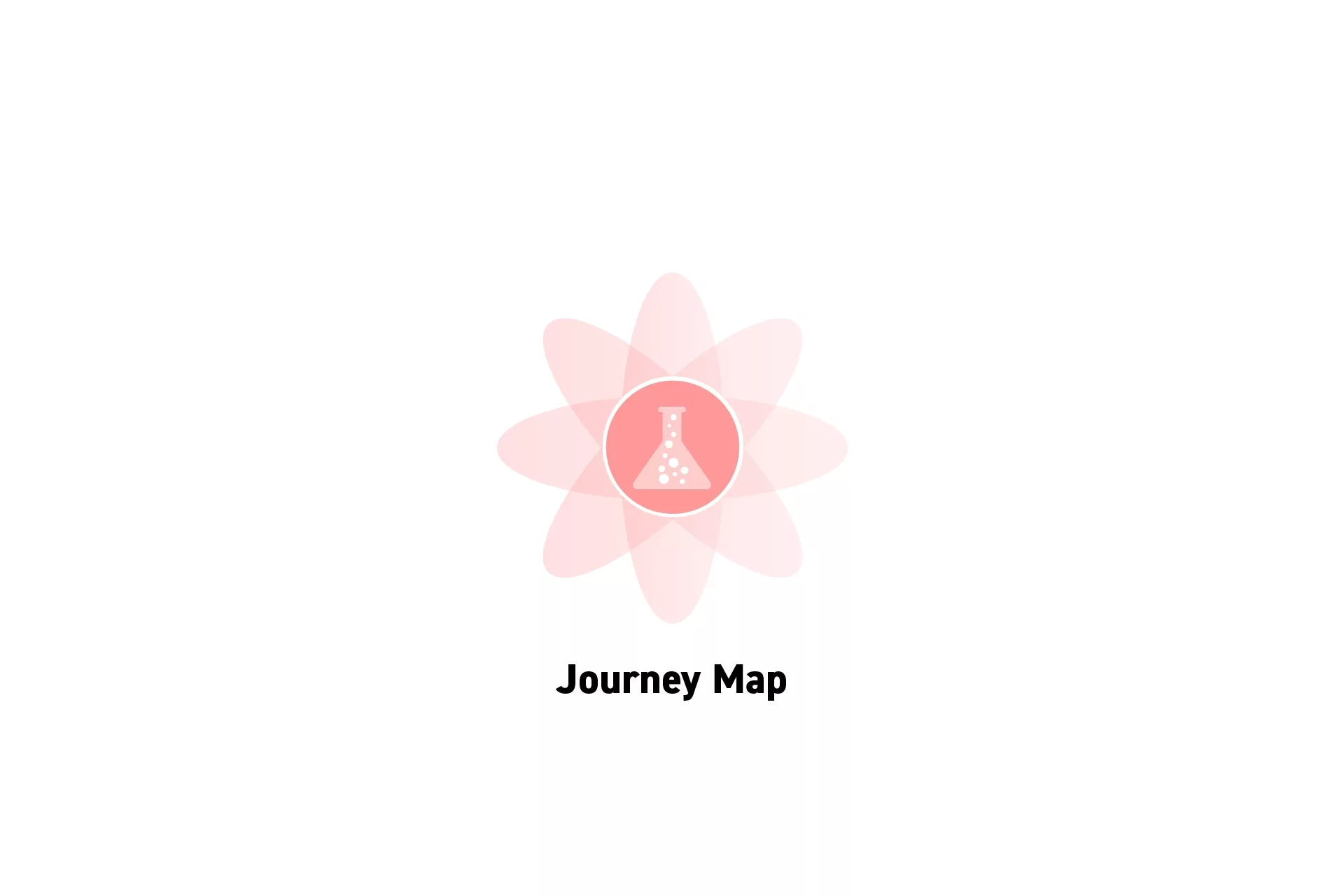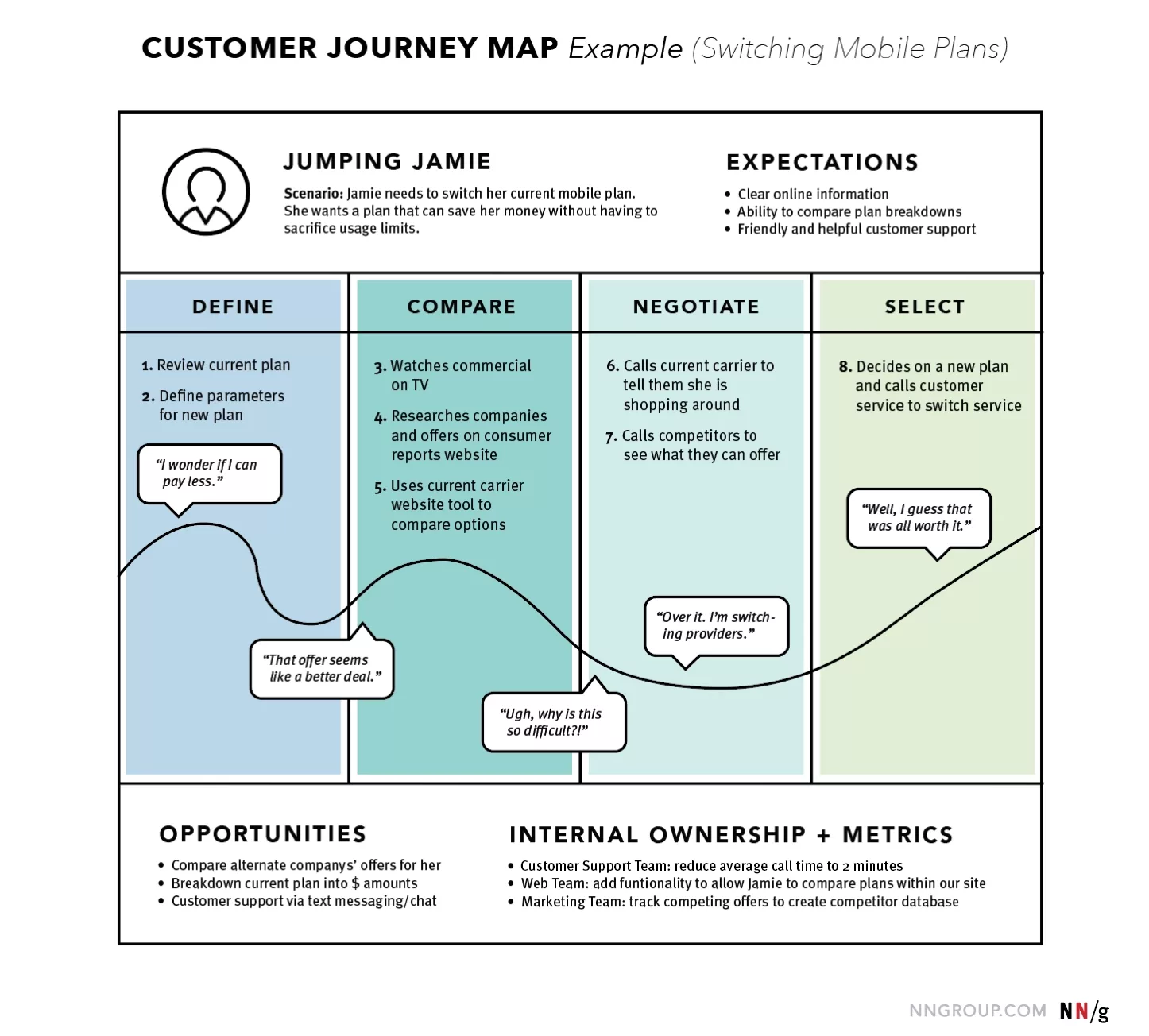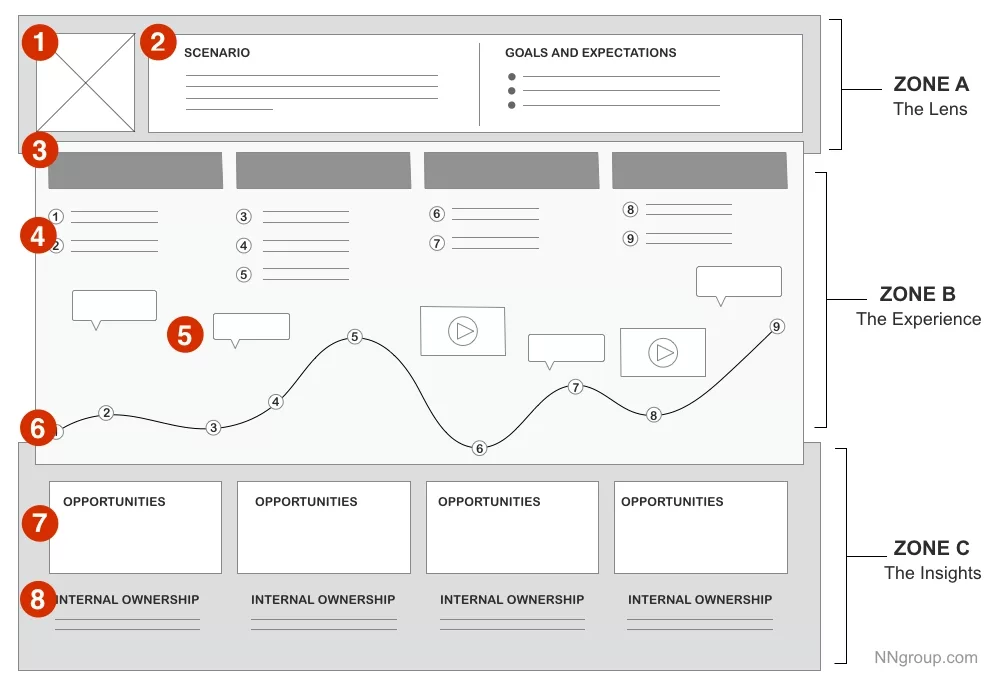What is a Journey Map?
A user journey map is a visualization of the process that a person goes through and the emotions that they feel when using a product, service or experience.

A user journey map is a visualization of the process that a person goes through and the emotions that they feel when using a product, service or experience.
SubscribeWhen creating a new feature, product, service or experience (i.e. a creation) or questioning how to improve a creation it is fundamental to know what currently works and what doesn't from the perspective of your target audience.
In order to learn how a creation functions for the target audience, individuals or organizations often carry out user research, desk research and interviews to gain an intimate, in-depth understanding of their customer.

An example of a simplistic, high-level customer-journey map depicting how the persona “Jumping Jamie” switches her mobile plan by the Nielsen Norman Group.
A useful tool as part of this research is to create a journey map, which are also known as a user journey map or a customer journey map, that belongs to a user persona which describes how a persona feels as they use a feature, product, service and experience.
This map should also include what occurs before and after the individual uses your creation and should detail all the external factors that affect persona in regards to the creation.
What makes up a Journey Map?
"Zone A: The lens provides constraints for the map by assigning (1) a persona (“who”) and (2) the scenario to be examined (“what”).
Zone B: The heart of the map is the visualized experience, usually aligned across (3) chunkable phases of the journey. The (4) actions, (5) thoughts, and (6) emotional experience of the user has throughout the journey can be supplemented with quotes or videos from research.
Zone C: The output should vary based on the business goal the map supports, but it could describe the insights and pain points discovered, and the (7) opportunities to focus on going forward, as well as (8) internal ownership."
The journey map can be broken down into the following components:
- The Person – This is usually represented as a Persona or an Archetype.
- Environment or scenario – This describes the journey that the user will be going on (i.e. Gina will be going to the Santiago Bernabeu to witness her first Real Madrid game).
- Journey Phases – This describes the high-level stages of the user’s journey. In the previous example we can use stages like Research -> Purchasing -> Anticipation -> Initial Experience.
- Actions, Mindset, Emotions – These are behaviors that the user will encounter throughout their journey and can be mapped while they go through the different stages. (i.e. Gina was feeling insecure during the research phase as buying tickets is known to be fraudulent and felt overwhelmed during the purchasing stage. This peaked during the anticipation phase but felt complete relief when she entered the stadium).
- Opportunities – These are insights that come as a result of the mapping. The opportunities allow the team to identify and answer questions like “How can we improve the ticketing experience?” and “Where are the biggest opportunities to improve the first-time fan experience?”.
Want to learn how to create Journey Maps?
To learn our approach to creating journey maps, consult the link below.
Looking to learn more about Research and Strategy?
Search our blog to find educational content on research and strategy.
